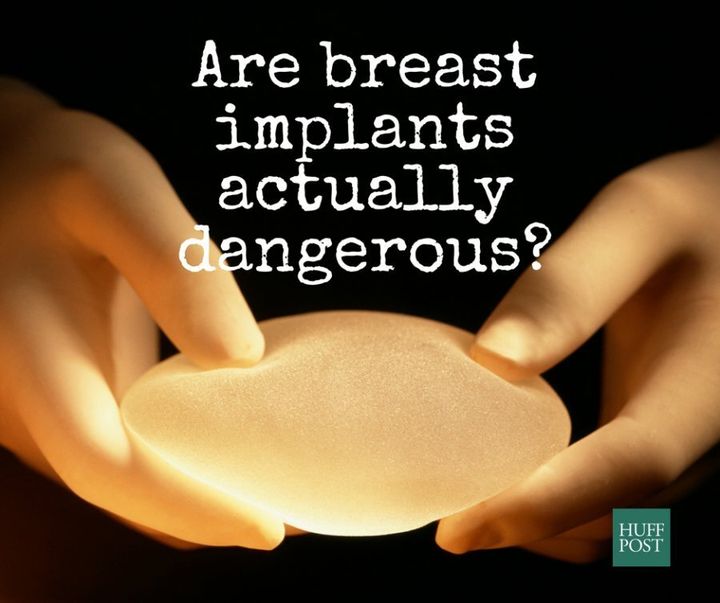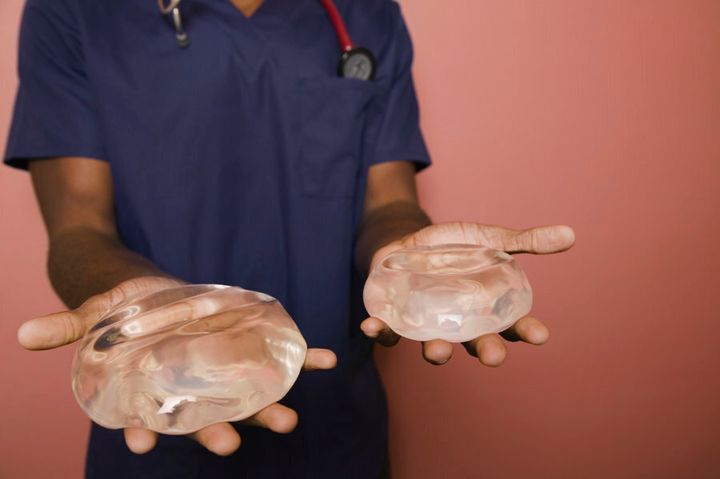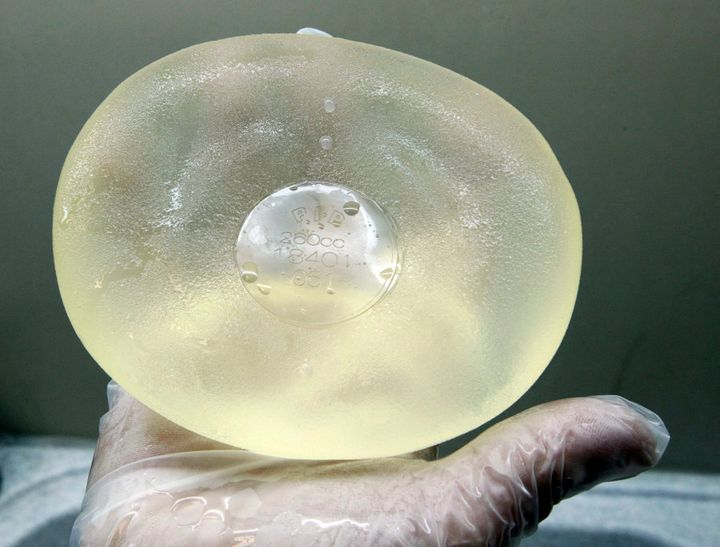
Last month, 'Playboy' model (and wife to Hugh) Crystal Hefner made headlines around the world when she posted an image of herself on Instagram with a lengthy caption titled 'My Breast Implants Slowly Poisoned Me'.
The 30-year-old was pictured recovering post-surgery at The Feng Clinic after having her implants removed -- a far cry from her usual bikini snaps and the many selfies which, let's be real, typically focus on her 34D's as much, if not more than, her actual face.
Hefner claims to have suffered from 'Breast Implant Illness', symptoms of which she says included "intolerance to foods and beverages, unexplained back pain, constant neck and shoulder pain, cognitive dysfunction (brain fog, memory loss), stunted hair growth, incapacitating fatigue, burning bladder pain, low immunity, recurring infections and problems with my thyroid and adrenals."
Crystal Hefner before she chose to have her breast implants removed.
Around the same time, reality star Heidi (Montag) Pratt told PEOPLE magazine the reason behind her decision to remove her F-size implants back in 2013.
"They were so heavy they were falling through the skin," she told the publication. "It was just too heavy for my body and I was in pain and uncomfortable all the time. I thought, 'What do I need this big of breasts for?'"
It's a good question -- but not one she was asking back in 2010 when she famously underwent ten plastic surgery procedures in a single day.
Crystal Hefner recovers after having her implants removed.
So what made these two women, both previously (seemingly) fans of their surgically enhanced assets, turn their backs on the procedure which can only be said to have helped their respective careers?
To hear them tell it, the health ramifications were just too great. Which in turn begs the question: just how dangerous are breast implants? And if they are dangerous, why is the procedure more popular than ever?
"In terms of cosmetic procedures, world wide, breast implantation would probably be the most commonly performed cosmetic operation," Dr Dr Gazi Hussain, Vice President of the Australian Society of Plastic Surgeons told The Huffington Post Australia.
"I don't have the exact numbers, but from my memory, the number of breast implants we are seeing are probably still increasing."

Despite its popularity, Hussain says the procedure is not one to be taken lightly, and urges any women considering going under the knife to think long and hard about if it's something they actually really want to do.
"There are safety issues with this sort of surgery. It should never be trivialised," Hussain said. "It's a proper invasive surgery, and things can go wrong. If they do, they can go horribly wrong. People can be left horribly scarred and deformed.
"There's a kind of catchphrase among plastic surgeons and it's 'think it over before you make over'. Don't act on a whim. This is not the sort of surgery you should be seeking if you have not thought it over very, very carefully."
But before we delve into the potential health risks associated with breast augmentation, let's start at the very beginning. What actually does this procedure involve, and how has it changed over the years?
Breast implants: A brief history
"Breast implant surgery actually has been around since the late 1950s -- it's been going for a while actually -- but it's evolved a great deal," Hussain told The Huffington Post Australia.
"Essentially it's where a foreign material or a foreign body is inserted under the tissues of the breast to augment or enlarge the size of the breast.
"Early implants were initially made of silicone. In terms of the very early ones -- if we are talking the 60s and early 70s -- what was inside the implant was like a silicone oil. Outside of the implant was, for want of a better term, a kind of plastic casing, and the oil was inside."
According to Hussain, these early implants proved problematic as there was a risk of "the case rupturing and that silicone oil leeching out."
Around the same time, there was also grave concerns regarding whether breast implants could cause "various auto-immune diseases and arthritis and things like that". The concerns proved so great in America, silicone was actually taken off the market.

"Throughout that time, they were still being used throughout the rest of the world and being used in Australia as well," Hussain continued.
"There was also lots and lots of research that then went into whether silicone implants are truly associated with auto immune diseases. It was found there was no association and as such, eventually they were reintroduced into the American market."
Silicone vs. saline
According to Hussain, saline breast implants use the same general type of casing as silicone, and enjoyed their peak of popularity in the US in the 90s prior to silicone implants being reintroduced to the market.
The saline solution was considered safer but in actuality, these types of implants pose a higher risk of deflation.
"While they felt safer, the problem is there is a reasonable risk of deflation," Hussain told HuffPost Australia. "The saline would just leak out."
Any time anyone puts something foreign into the body, there is always a risk of infection.Dr Gazi Hussain
He also states saline "never had a natural feel" and "always felt hard rather than having that softness to them."
"Pretty much in this day and age, I would say 99 percent, or the vast majority of all breast implants, are silicone," he said.
He also notes the silicone implants have come a long way since the 60s and 70s.
"What is inside the implant is a much thicker gel, so it tends to keep its shape a lot more," Hussain said. "Also the the casing around the implant is obviously a lot stronger. The risk of rupturing has been significantly reduced -- though it's not impossible -- but it's very, very low.
"Even if it was to happen, the implant would most likely stay in its shape, like a jelly. But the main reason people have gone back to silicone is because they really do have a much more natural feel."

Risks
Rupture
"Really, in terms of rupture, there would have to be some kind of significant trauma," Hussain told The Huffington Post Australia. "If someone was in a motor vehicle accident and had significant trauma to their chest, there could be a chance of their implants rupturing."
The other factor that could contribute to the likelihood of an implant rupturing is the quality of the implant itself.
"If there was a problem with the integrity of the implant in terms of its manufacture, that could pose a risk," Hussain said.
"In the past there have been concerns with some implants, particularly if they are made by a smaller company, and the silicone they are using. The silicone has to be medical grade to be deemed safe.
"There have been instances where a company was not using medical grade silicone, but industrial grade silicone, in the manufacturing of their implants.
"There are a number of different companies that make implants and at the end of the day, some are made better than others."

Infection
"In terms of the actual implant, I guess from a safety point of view, the first thing I have to say is that -- whether we are talking about a saline or silicone implant or if you are having a knee replacement -- all of these things are foreign objects," Hussain said. "Any time anyone puts something foreign into the body, there is always a risk of infection.
"Sometimes that can happen immediately, sometimes it can happen months or even years afterward.
"A classic example is someone who has a knee replacement, and then later on has an abscess in their tooth. The bacteria gets into the bloodstream and, well, a foreign object is a really good place for bacteria to hide."
Scar tissue
Scar tissue can also prove problematic, due to the simple fact it's the way the body will respond to any type of foreign object.
"Scar tissue doesn't really do anything to metal, so it won't prove to be a problem for a knee replacement, for instance," Hussain said. "But scars are always trying to contract in on themselves -- that's just what they do.
"So if you have an implant that's soft and impressible, and you have scar tissue that contracts, you can get what is termed as capsular contracture. Basically this refers to the process of scar tissue contracting until it starts to deform the implant. It is often associated with significant pain."
Crystal Hefner after having her breast implants removed.
Movement
"Sometimes implants can move slightly," Hussain said. "Obviously, they come in various sizes and shapes.
"There's the teardrop shape, and the purpose of that is to try and mimic the fall of the breast. Then there is a more hemispherical shape, which tends to have a rounder result.
"If you have an implant that is a teardrop shaped, if it moves a little bit, it can often change the shape of the breast. You then may need to have that position corrected."
Future surgeries
"The other thing about implants is they are a man-made product," Hussain continued. "And there is no man-made product that lasts forever.
"There is a chance -- and we certainly tell women these days -- that there is likelihood they may need to have implants changed down the track. There is never a lifetime guarantee for an implant.
"Having said that, there are women who have had them in for 30, 40 years and have never had a problem. You don't have to get them changed if they aren't causing any problems."
Lymphoma
It's important to note breast implants have been associated with causing a type of lymphoma, though Hussain says the risk is "something like one in a million".
According to the American Society of Plastic Surgeons, women considering any type of breast implant surgery should take this into consideration before proceeding.
In 2011, with an update in 2016, the FDA issued a statement warning of "a very small, but increased risk" of ALCL in women with breast implants.
German model Mayra Hills (aka Beshine) claims to have the largest augmented breasts in the world.
Misconceptions
When it comes to breast implants, the results are often seen (especially among Hollywood stars) but the actual process is rarely discussed, meaning many of those considering breast augmentation surgery may have some misconceptions about what exactly is and isn't possible.
For instance, despite popular opinion, breast implants do not correct droopy breasts.
"Women who have had some babies and undergone the process of breastfeeding may find, after pregnancy and lactation, that there is a bit of deflation in their breasts and that they will droop a bit," Hussain said.
"If it's a marked droop, a breast implant won't correct the problem. The patient will need some degree of skin removal and tightening to lift the nipple, and then the implant to provide the volume."
You also can't just jump ahead several sizes if your skin isn't capable of such an extreme adjustment.
"The limitation in size is more about what the skin will tolerate," Hussain said. "If you have relatively good quality elastic skin you can put large implants in.
"But this isn't always possible. To go from nothing to huge in one operation is very difficult. You may need several operations for that to occur, in order to allow the skin to stretch a bit, and then you can go back and have bigger implants later down the track."
Once you have implants, going back is quite difficult... If you take them out, there's no guarantee you will go back to what you had before.
It's also not as easy to reverse the decision if, later on, you decide implants aren't what you hoped they would be.
"In the media, unfortunately things like breast implantation is a bit trivialised. Young women say 'I don't like the look of my breasts, I need to go get implants' without realising it's a lifetime decision," Hussain said.
"Once you have implants, going back is quite difficult. Because the skin gets stretched. If you take them out, there's no guarantee you will go back to what you had before. In fact, you will more likely have more of a droopy breast, because the skin has stretched.
"Things like pregnancy are also going to affect the breast over the top of the implant, which many people don't realise. So a young woman might have an implant put in, get pregnant, have a few kids, and find their breast will 'drop off' their implant, or become droopy over the top.
"Basically if you have implants in your 20s, it's likely you are going to need to have further surgery down the track."

Things to consider
"Do the research and homework before committing to the procedure," Hussain said.
"Do your research into the safety of the initial procedure. Is the procedure being performed in medically licensed facility, or is it in the back of someone's office? Who is doing this procedure? Are they qualified surgeon? What is their background? Where have they done their training? Who has overseen their training? Where are these implants coming from?
"If you have an implant that's half the cost of everyone else's implants, you might want to take a good hard look at where they come from and what quality assurance is around them.
"Ask what is going to happen after the surgery... Who will look after you? Will you ever see that surgeon again?
We have heard stories about people who have been put on planes and sent home with wounds that are not yet fully healed.
"All of this, of course, is very applicable to overseas treatment. The stories we hear of people who meet the person who is doing their operation five minutes before their operation starts... and at this stage, they have paid the money, taken time off, come all this way... it's very difficult at that point to back out if you have reservations.
"Also the whole thing of the facility, the level of training, or whether or not there's a complication... We have heard stories about people who have been put on planes and sent home with wounds that are not yet fully healed."
With Hussain estimating the price of a cosmetic breast enlargement price to be anywhere between eight and $20,000, it's a lot of money to part with if you're not quite sure you'll like the end results -- not to mention the risks you are imposing on your health.
"I certainly wouldn't recommend someone seeing just the one person," he said. "It's very important to get a second opinion for these types of procedures. And make sure you see a specialist plastic surgeon for this procedure.
"What many people don't realise is that you do not have to be a plastic surgeon to do cosmetic surgery.
"I guess the main thing is to really, truly think over carefully. When you do decide, make sure you are seeing someone adequately trained, and someone in properly licensed facility."